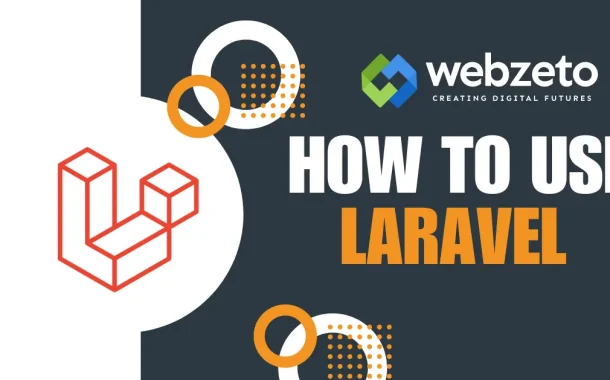Key features of Laravel include Eloquent ORM, which makes database operations straightforward, and Blade Templating, which simplifies the process of creating dynamic web pages. The Artisan Console provides command-line tools for common tasks, while Middleware efficiently manages HTTP requests. Additionally, Laravel Mix streamlines asset compilation and management. These features collectively make Laravel a powerful and flexible framework, ideal for modern web development projects.
Table of Contents
Table of Contents
Setting Up Laravel
By following these steps and understanding the directory structure, you will have a solid foundation to start developing your Laravel applications.
Installing Laravel
- Ensure your system has PHP 7.3 or higher installed.
- Install Composer, the dependency manager for PHP.
- Set up a web server like Apache or Nginx.
- Download Composer from getcomposer.org.
- Follow the installation instructions for your operating system.
- Verify the installation by running composer –version in your terminal.
- Open your terminal and run composer global require laravel/installer.
- Ensure Composer’s global bin directory is in your system’s PATH.
- Check the installation by running laravel –version.
- Navigate to your desired directory in the terminal.
- Create a new project by running laravel new project-name.
- Alternatively, use composer create-project –prefer-dist laravel/laravel project-name.
- Change to the project directory with cd project-name.
Configuration Options
- Copy the .env.example file to .env in your project directory.
- Generate an application key by running php artisan key:generate.
- Update environment settings such as the app name, URL, and debug mode in the .env file.
- Set your database connection details in the .env file.
- Specify the database type, host, port, database name, username, and password.
- Ensure your database server is running and accessible.
- Configure your web server to serve your Laravel application.
- For Apache, make sure the .htaccess file is correctly set up.
- For Nginx, configure the server block to point to the public directory of your Laravel project.
Directory Structure
- App: Contains the core code of your application, such as models and controllers. The Http directory houses controllers, middleware, and requests. The Models directory contains Eloquent model classes.
- Bootstrap: Initializes the framework and handles the start-up scripts. The cache directory stores the framework generated files for performance optimization.
- Config: Contains all the configuration files for your application. Each file represents a different configuration aspect, like database, mail, and services. Customize settings as per your application’s requirements.
- Database: Houses migration files and database seeds. Use migrations to create and modify database tables. Seeds are used to populate the database with initial data.
- Public: Entry point for web requests; contains the front controller index.php. Store publicly accessible assets like images, CSS, and JavaScript files here. This directory is exposed to the web.
- Resources: Holds your views, raw assets (CSS, JavaScript), and language files. The views directory contains Blade templates for your application. The lang directory stores localization files.
- Routes: Contains all route definitions for your application. The web.php file defines routes for the web interface. The api.php file defines routes for the API.
- Storage: Contains compiled Blade templates, file-based sessions, file caches, and application logs. The app directory stores user-generated files. The logs directory contains application log files.
- Tests: Contains test cases to ensure your application works as expected. Use PHPUnit to write and run tests. The Feature directory contains tests that check larger application features, while the Unit directory focuses on individual components.
- Vendor: Houses all Composer dependencies required by your application. Managed by Composer, do not modify this directory manually. Contains both Laravel’s core code and any additional packages you have installed.
Basic Concepts
Routing in Laravel defines how URLs map to specific actions. You set up routes in the routes/web.php file using methods like Route::get() and Route::post(). Routes can capture values from the URL using parameters, making your application more dynamic. You can also name routes for easy reference and generate URLs with the route() helper function.
Controllers handle the request logic in your application. Create a controller using the command php artisan make:controller ControllerName, and store it in the app/Http/Controllers directory. Methods in controllers correspond to different actions, such as displaying a page or processing form data. Resource controllers provide a set of standard actions for common operations and are defined using Route::resource().
Views display the data and the user interface. Laravel uses the Blade templating engine to create views, which are stored in the resources/views directory. Blade makes it easy to pass data from controllers to views and includes features like template inheritance, components, and control structures. With Blade, you can create dynamic and reusable templates for your application.
Working with Models and Databases
Models in Laravel represent the data structure of your application. They interact with the database to retrieve and store data. You can create a model using the command php artisan make:model ModelName, and it will be stored in the app/Models directory. Eloquent ORM is used to interact with the database in a simple and elegant way.
Migrations in Laravel act like version control for your database. They help you create, modify, and share the database schema. You can create a migration using php artisan make:migration create_table_name, and migrations are stored in the database/migrations directory. To apply the migrations, run php artisan migrate.
Eloquent ORM allows you to perform database queries easily. For example, you can retrieve all records with ModelName::all() or find a record by its ID with ModelName::find($id). You can also define relationships between models, such as one-to-many or many-to-many, making it easier to manage related data. Eager loading can be used to load related models in a single query, improving performance.
Middleware and Authentication
Middleware in Laravel filters HTTP requests entering your application. It acts as a layer between the request and response, performing tasks like checking authentication or logging. You can create middleware using the command php artisan make:middleware MiddlewareName, and it is stored in the app/Http/Middleware directory. Middleware is registered in the app/Http/Kernel.php file and can be applied to routes or controllers.
Authentication in Laravel provides a built-in system for handling user registration, login, logout, and password reset. You can set up authentication by running php artisan ui vue –auth in newer versions of Laravel. This command generates the necessary routes, controllers, and views. You can customize the authentication logic and views to fit your application’s needs, modifying files in the app/Http/Controllers/Auth and resources/views/auth directories.
For managing user roles and permissions, you can assign roles to users to control access. Using packages like spatie/laravel-permission makes this process easier. Define permissions for different actions and check them in your controllers and views to restrict access. Middleware can also be used to enforce role and permission checks on specific routes, ensuring that only authorized users can access certain parts of your application.
Forms and Validation
Forms in Laravel allow users to input data conveniently, like filling out a registration form. You create forms using HTML <form> elements in your views, specifying the method (like GET or POST) for how the form data will be sent. Inside the form, you use various input types (like text fields, email fields, and password fields) to collect different types of information from users, such as their name, email address, or password.
Validation ensures that the data users submit through forms meets specific criteria. It’s like double-checking to make sure the information provided is correct and complete. In Laravel, you define validation rules for each form field, such as making sure an email field contains a valid email address or ensuring a password field is not left empty. If the user enters incorrect or incomplete information, Laravel automatically redirects them back to the form with error messages, allowing them to correct their input. This helps maintain data integrity and prevents errors in your application.
Handling validation errors in Laravel is straightforward. When a form submission fails validation, Laravel automatically sends the user back to the form with error messages displayed. Users can see where they went wrong and correct their input accordingly. Additionally, Laravel retains the information the user entered into the form fields, so they don’t have to start from scratch. This makes the user experience smoother and more user-friendly, reducing frustration and improving overall usability.
Sessions, Cookies, and Caching
Sessions, cookies, and caching are like three handy tools in web development, making things smoother and faster for both users and developers. Sessions are like little memory slots where you can store information about a user as they move around your website. For example, you can remember their name or preferences from one page to another. Cookies are like tiny notes that your website leaves on the user’s computer. They’re useful for remembering things like login details or what items are in a shopping cart, even if the user closes their browser and comes back later.
Caching is like having a secret stash of frequently used information that your website can quickly grab instead of fetching it from the main storage every time. This makes your website faster because it doesn’t have to do the same work over and over again. Laravel, the framework we’re talking about, has built-in features to help you work with sessions, cookies, and caching without having to write a lot of complicated code. With Laravel, you can easily store and retrieve session data, set and read cookies, and manage caching to make your website faster and more efficient. These tools make web development more efficient and improve the overall user experience.
Testing and Debugging
Testing your code is like double-checking your work to make sure everything is correct. It’s like running through a checklist to ensure you didn’t forget anything important. There are different types of testing, like unit testing, which checks individual parts of your code, and feature testing, which tests how the different parts of your application work together. These tests help you catch any mistakes or errors before they cause problems for your users.
Debugging is like being a detective, trying to figure out why something isn’t working as expected. It involves looking for clues in your code to find and fix errors. Laravel provides helpful tools like Laravel Debugbar, which gives you information about what’s happening behind the scenes in your application. You can also use techniques like stepping through your code and checking inputs and outputs to track down and fix bugs. By testing and debugging your code, you can make sure your application runs smoothly and provides a great experience for your users.
FAQs
Q. Can I use Laravel for building both small and large-scale applications?
Yes, Laravel is suitable for projects of all sizes. Its flexibility and scalability make it a popular choice for both small business websites and large enterprise applications.
Q. Is Laravel difficult to learn for someone new to web development?
While Laravel does have a learning curve, its clear documentation and extensive community support make it accessible for beginners. With some dedication and practice, anyone can become proficient in Laravel development.
Q. How does Laravel compare to other PHP frameworks like CodeIgniter or Symfony?
Laravel stands out for its elegant syntax, built-in features like Eloquent ORM and Blade templating engine, and robust ecosystem of packages. While other frameworks have their strengths, Laravel’s developer-friendly approach and extensive documentation make it a top choice for many developers.
Q. Can I integrate third-party packages or libraries with Laravel?
Yes, Laravel has a thriving ecosystem of third-party packages available through Composer. You can easily integrate packages for features like authentication, payment processing, and more to extend Laravel’s functionality and save development time.
Q. Is Laravel suitable for building RESTful APIs?
Absolutely! Laravel provides built-in support for building RESTful APIs, making it a popular choice for developing backend services. With features like resource controllers, route model binding, and API authentication, Laravel makes it easy to create robust and scalable APIs for web and mobile applications.
Conclusion
Laravel offers a powerful and user-friendly framework for building web applications. Its intuitive syntax and extensive documentation make it accessible to developers of all skill levels, from beginners to seasoned professionals. By leveraging features like routing, controllers, views, and middleware, developers can create dynamic and scalable applications with ease.
Furthermore, Laravel’s built-in tools for database interaction, authentication, and testing streamline the development process, allowing developers to focus on building great features rather than reinventing the wheel. With a vibrant community and a vast ecosystem of packages available through Composer, Laravel provides a solid foundation for building modern web applications.














